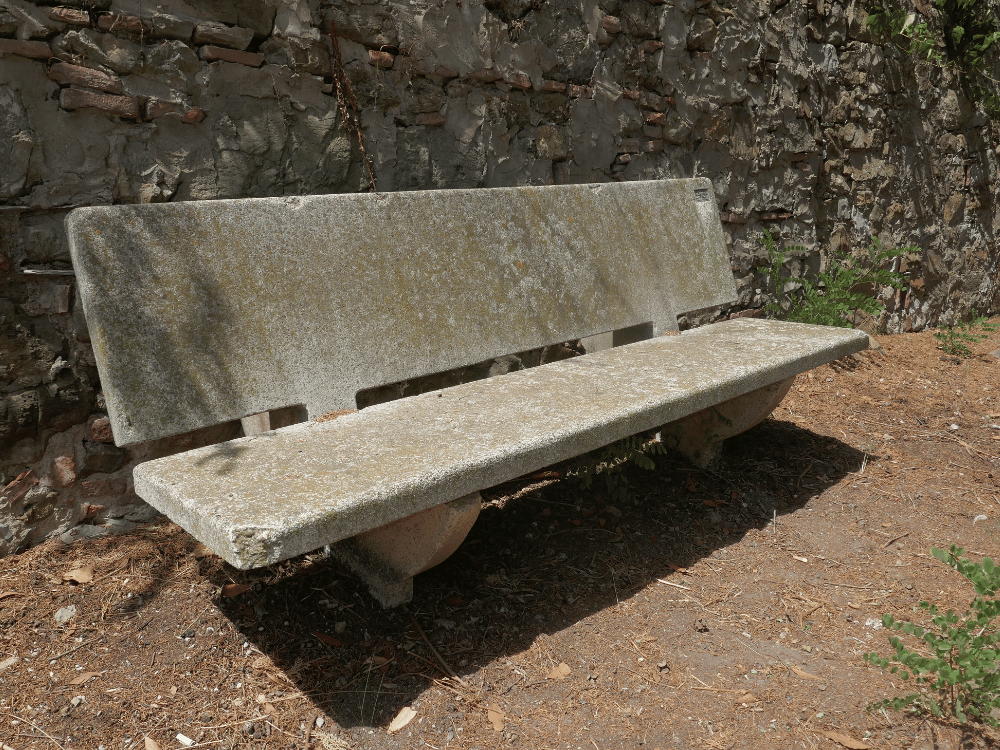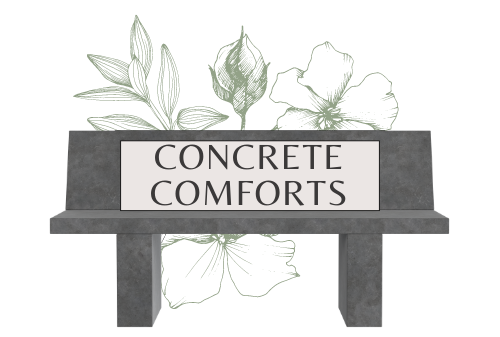Concrete furniture is made of an incredibly durable material that can last a lifetime with the right care.
Much like natural stone, concrete can have slight variations in color, texture, and porosity, which add to its unique character and charm.
While fine cracks, stains, and minor irregularities might appear over time, these do not affect the structural integrity of the furniture and are not considered defects.
This guide will walk you through the essential steps to care for your concrete furniture, including cleaning practices, maintenance tips, and how to reseal the surface to protect it from the elements.
Understanding Concrete Furniture

Concrete furniture, especially pieces made with fiber-reinforced concrete, is tinted with pigments mixed directly into the material.
A specialized water-based sealer typically coats the exposed surfaces, making them safe for food contact and protecting the concrete’s porous surface.
This sealer forms a water-resistant layer that helps minimize staining and surface scratches. However, despite its toughness, concrete still requires proper care to maintain its appearance and functionality over time.
To preserve your furniture, you must understand how concrete behaves under different conditions and manage its exposure to the elements.
General Care and Maintenance
To keep your concrete furniture looking its best, follow these general care guidelines:
| Step | Instruction |
|---|---|
| Regular Cleaning | Clean your concrete furniture as you would clean a high-end natural stone surface, like marble or onyx. Use warm water and a soft cloth or microfiber towel to wipe down the surface. |
| Dealing with Stubborn Stains | For persistent spots or surface stains, use a mild household cleaner or liquid soap (free from abrasives, bleach, or ammonia). Test any cleaning agent on a small area first. |
| Rinsing and Drying | After cleaning, thoroughly rinse off any cleaning residue with clean water and dry the surface immediately to avoid water spots or stains. |
| Spill Management | Although the sealer helps prevent staining, clean up spills on your concrete furniture as soon as possible to prevent liquids from penetrating the surface. |
| Heat Protection | Concrete is heat-resistant, but hot objects can damage the sealer. Always use trivets or heat pads under hot pots and pans to protect your concrete furniture from damage. |
| Preventing Scratches | Use cutting boards for food preparation and place felt pads or rubber feet under heavy objects to prevent scratches and surface wear on your concrete furniture. |
| Outdoor Furniture Care | Protect outdoor concrete furniture from the elements by covering it when not in use. This helps preserve the sealer and the original finish. |
Resealing

Resealing your concrete furniture every 24 months is generally recommended, especially for outdoor pieces exposed to the elements.
This process helps maintain the protective barrier and keeps the surface looking fresh. In areas with freezing temperatures, resealing just before winter is advisable to prevent cracking.
| Step | Instruction |
|---|---|
| Initial Cleaning | Thoroughly clean the concrete surface with water and a soft brush. Allow the furniture to dry completely, which may take 8 to 10 hours. |
| Surface Preparation | Lightly sand the surface using 400-grit gray sandpaper, wetting the surface during sanding to help fill in small cracks with the gray slurry that forms. |
| Final Cleaning | After sanding, let the furniture dry for at least 3 hours. Once dry, wipe down the surface with a microfiber cloth to remove any dust or residue. |
| Applying the Sealer | Apply the sealer evenly with a brush or soft cloth on the dry, clean surface, covering the entire surface, including the joints. |
| Removing Excess Sealer | Before the sealer dries, remove any excess with a clean cloth. For highly absorbent surfaces, apply a second coat after 20 minutes. |
| Drying Time | Wait at least 3 hours before using the furniture. The sealer’s full protective properties will be activated after 24 hours. |
With proper care and regular maintenance, your concrete furniture can remain a beautiful and functional part of your home for many years.
Following these guidelines will help you protect the unique characteristics of concrete and ensure its durability, whether your furniture is used indoors or outdoors.
Keep in mind that concrete, like any natural material, will age and develop a patina over time, adding to its charm and individuality.
Proper maintenance of your concrete furniture will ensure it retains its aesthetic appeal and structural integrity for years to come.

